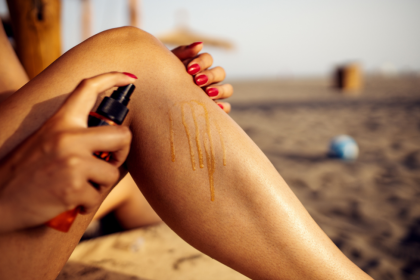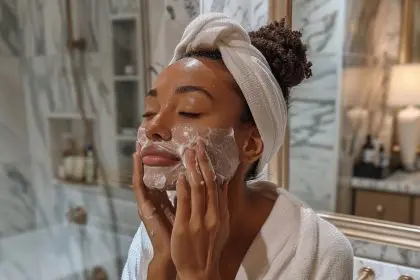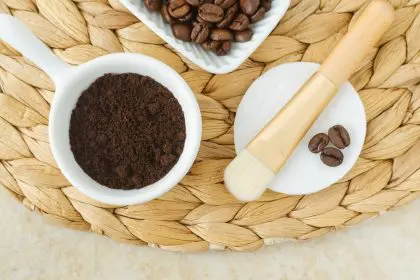You’ve been using the same skincare routine religiously for months, watching your skin transform and glow like never before. Then suddenly, seemingly out of nowhere, those miracle products that used to make you look like you had a professional filter applied to your face stop delivering results. Your skin looks exactly the same as it did before you started the routine, and you’re left wondering if you imagined the entire transformation.
This isn’t your imagination playing tricks on you, and it’s not because the products suddenly became less effective. Your skin has essentially developed a tolerance to your routine, similar to how your body can build tolerance to medications or caffeine. What dermatologists call “product plateau” is a real biological phenomenon that affects almost everyone who sticks with the same skincare routine for extended periods.
The frustrating part is that this plateau often happens right when you’ve finally found products you love and want to stick with forever. Your skin has other plans, and understanding why this happens can help you work with your skin’s natural adaptation processes rather than against them.
Your skin cells develop tolerance like a biological immune system
Your skin is constantly adapting to whatever you apply to it, and this adaptation process includes developing tolerance to active ingredients over time. When you first introduce a new product, your skin cells respond dramatically because they’re encountering unfamiliar chemical signals that trigger various repair and renewal processes.
After weeks or months of consistent use, your skin cells essentially learn to expect these ingredients and stop responding as dramatically to their presence. It’s like your cellular machinery gets used to the stimulation and requires higher concentrations or different approaches to achieve the same results.
This tolerance development happens at the receptor level, where your skin cells literally have fewer available binding sites for the active ingredients to attach to and create their beneficial effects. Your skin isn’t broken or damaged, it’s just become efficient at processing the ingredients you’ve been feeding it.
The timeline for this tolerance varies depending on the specific ingredients and your individual skin biology, but most people start noticing diminished results after 8-12 weeks of consistent use with the same products.
Product layering creates unexpected chemical interactions
Many skincare routines involve layering multiple products with different active ingredients, and over time these combinations can create complex chemical interactions that interfere with individual product effectiveness. What starts as a harmonious routine can evolve into a chemical soup where ingredients compete for absorption or neutralize each other’s effects.
pH interactions are particularly problematic when layering products. Different ingredients work optimally at different pH levels, and when you layer products with incompatible pH requirements, you can actually deactivate the very ingredients you’re trying to benefit from.
Some ingredients also create films or barriers on your skin that prevent subsequent products from penetrating effectively. This means that the order you apply products matters enormously, and what worked initially might stop working as your skin’s surface conditions change over time.
The cumulative effect of product buildup can also create a barrier that prevents new products from reaching the deeper layers of skin where they need to work. Your skin essentially becomes oversaturated with products, reducing the effectiveness of everything you’re applying.
Your skin’s natural renewal cycle disrupts product timing
Your skin completely regenerates itself approximately every 28 days, which means the skin cells that initially responded to your skincare routine are no longer present after about a month of use. The new skin cells that replace them may have different needs, sensitivities, and responses to the same ingredients.
This natural turnover process explains why products that worked amazingly for the first month might start showing diminished results around the 6-8 week mark. You’re essentially treating completely different skin with the same approach, and that new skin might require different ingredients or concentrations to achieve similar results.
Seasonal changes in your skin’s behavior also disrupt product effectiveness. Your skin produces different amounts of oil, has different hydration needs, and faces different environmental stressors throughout the year. A routine that works perfectly in winter might be completely wrong for your skin in summer.
Hormonal fluctuations add another layer of complexity to this process. Your skin’s needs change based on your menstrual cycle, stress levels, sleep quality, and overall health status. Products that work during one phase of your cycle might be ineffective or even problematic during another phase.
Environmental factors constantly change your skin’s needs
Your skin is constantly adapting to environmental conditions like humidity, temperature, pollution levels, and UV exposure. A skincare routine that works perfectly in one environment might be completely inadequate when these external factors change.
Moving to a new climate, changing jobs, or even switching offices can alter your skin’s needs enough to make your current routine ineffective. Your skin might need more hydration, different types of protection, or completely different active ingredients to maintain optimal health in new conditions.
Indoor air quality has a particularly dramatic impact on skincare effectiveness. Changes in heating, air conditioning, or indoor humidity levels can alter your skin’s moisture balance and pH, affecting how products absorb and function.
Even subtle changes like switching to a different water source can impact your skincare routine effectiveness. Hard water, soft water, and different mineral contents all affect how products interact with your skin and how effectively they can penetrate and work.
Ingredient degradation happens faster than you think
Many active ingredients in skincare products are inherently unstable and begin degrading from the moment you open the container. Exposure to air, light, temperature fluctuations, and contamination from fingers or applicators all accelerate this degradation process.
Vitamin C, retinoids, and many botanical extracts are particularly susceptible to degradation, losing potency over time even when stored properly. What might have been a highly effective concentration when you first opened the product could be significantly weaker months later.
Storage conditions dramatically impact ingredient stability. Products stored in bathrooms, which tend to have high humidity and temperature fluctuations, degrade much faster than those stored in cool, dry places. Most people unknowingly store their skincare in conditions that accelerate ingredient breakdown.
The way you use products also affects their stability. Double-dipping into jars, using wet hands to apply products, or leaving containers open for extended periods all introduce contaminants and conditions that speed up ingredient degradation.
Your skin barrier function evolves with product use
Extended use of certain skincare ingredients can actually strengthen your skin barrier over time, which ironically can make other products in your routine less effective. A stronger, healthier skin barrier is better at preventing both harmful substances and beneficial ingredients from penetrating into deeper skin layers.
This improved barrier function is generally positive for skin health, but it can reduce the effectiveness of products that rely on penetration to work properly. Ingredients that initially absorbed easily might start sitting on the surface of your improved skin barrier instead of reaching their target tissues.
Over-exfoliation from consistent use of acids or retinoids can also compromise your skin barrier, creating inflammation and sensitivity that interferes with your other products’ effectiveness. Your skin might start reacting poorly to ingredients it previously tolerated well.
The balance between maintaining an effective skincare routine and preserving healthy barrier function requires ongoing adjustment as your skin’s condition improves or changes over time.
Strategic product rotation prevents plateau effects
Understanding why skincare stops working allows you to proactively prevent plateau effects through strategic product rotation and routine adjustments. This doesn’t mean constantly switching products, but rather making thoughtful modifications based on your skin’s evolving needs.
Consider rotating between different formulations of the same active ingredients to prevent tolerance while maintaining consistent benefits. Using vitamin C serum some days and vitamin C moisturizer others provides variety while targeting the same skin concerns.
Take periodic breaks from certain active ingredients to allow your skin to reset its sensitivity and responsiveness. A one-week break every few months can often restore your skin’s response to products that have become less effective.
Monitor your skin’s response to environmental and hormonal changes, adjusting your routine seasonally or based on your cycle. This proactive approach prevents problems before they develop rather than trying to fix issues after they arise.
The key is understanding that effective skincare is an ongoing conversation with your skin rather than a set-and-forget routine, requiring attention and adjustment as your skin’s needs evolve over time.















